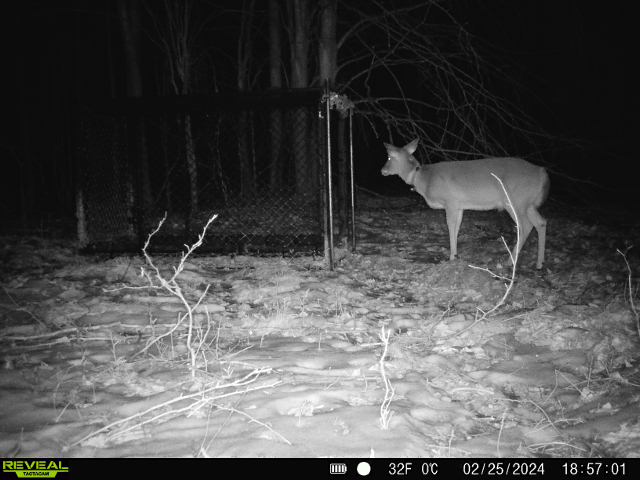When I was a kid, I was a voracious consumer of facts. We had the Encyclopedia Americana and all the associated yearbooks and volumes that were available. I read each volume from cover to cover. I also had every field guide I could get my hands on, and my favorite TV show was Wild Kingdom, starring Marlin Perkins and Jim Fowler.
I was always curious about the age of different animals, from the feeder birds outside the window to the deer we hunted annually in northern Tioga County. I remember at some point reading that white-tailed deer could live 10 years in the wild. Wow! That’s neat.
One day last winter a radio-collared doe began visiting one of our Clover traps in the Susquehannock State Forest. The next day we tied the trap open because we didn’t want to unnecessarily catch a deer that was already marked. She returned several times and began going into the unarmed trap. The collar didn’t look quite right so I sent the photo to the experts. After looking at it, they confirmed that it was an old VHF collar from a previous study. “If you can catch her, you can put a new collar on her.” Challenge accepted.

We caught her within a couple days. While processing her we took note of the old, non-reward ear tag and replaced the old collar with a new GPS collar. I sent the data to Penn State and was surprised to learn that she had initially been captured as a fawn 13 years earlier! A few weeks later we captured another doe that had originally been caught and tagged in 2015 as an adult, making her at least 12 years old.
These two captures piqued my interest. Do these teenage does still produce fawns? I decided that when fawning season arrived, I would use trail cameras to get pictures of them to answer that question. Luckily, I had access to each collared deer’s GPS locations and movements so I could map their movements. I used that information to pinpoint some areas where each doe was traveling or spending time. I chose several locations that gave me convenient access to set up and check the cameras with minimal disturbance. One such location for the 14-year-old doe showed a very small and dense cluster of points near an old logging road. This could be a favorite bedding area, or possibly where this doe had dropped a fawn. Either way, I was putting a camera there.


Cameras were deployed in mid–late June and by early July the pictures were rolling in. On July 6 I got pictures of the 14-year-old and a fawn, but not in the same frame. This is good, I thought, but I continued collecting pictures until I had both the doe and fawn in one picture. Finally at the end of July, success! Since then, I’ve also gotten pictures of the 12-year-old and her fawn but haven’t been able to get a clear shot of both in the same frame.
I can confirm that deer do in fact live to be 10 years old (and older!) in the wild AND they still successfully raise fawns. All those years of Wild Kingdom paid off.
Tom Swimley
Northern Crew Leader
PA Game Commission
